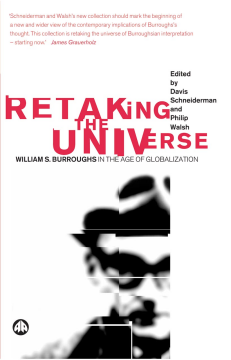
Additional Information
Book Details
Abstract
William S. Burroughs is one of America's most influential and widely studied writers. A leading member of the Beat movement, his books and essays continue to attract a wide readership. His films, paintings, recordings and other projects that grew out of his literary production, together with his iconic persona as a counter-culture (anti-)hero, mean his work has become a broad cultural phenomenon.
This collection of essays by leading scholars offers an interdisciplinary consideration of Burroughs's art. It links his lived experience to his many major prose works written from 1953 on, as well his sound, cinema and media projects. Moving beyond the merely literary, the contributors argue for the continuing social and political relevance of Burroughs's work for the emerging global order.
Themes include: Burroughs and contemporary theory; debates on 'reality'; violence; magic and mysticism; cybernetic cultures; language and technology; control and transformation; transgression and addiction; the limits of prose; image politics and the avant-garde.
'These essays testify to the continuing relevance of Burroughs' words and project in the twenty-first century'
Steven Shaviro, author of Doom Patrols and Connected
'Schneiderman's and Walsh's new collection should mark the beginning of a new and wider view of the contemporary implications of Burroughs's thought. This book is retaking the universe of Burroughsian interpretation - starting now'
James Grauerholz
'The first serious and well conceived study of Burroughs' global influence'
Victor Bockris
'El Hombre Invisible goes global. Thanks to Schneiderman and Walsh's Retaking the Universe, Burroughs finally manages to storm the theory studio'
Sylvere Lotringer, Editor of Semiotext(e) and Burroughs Live.
Table of Contents
| Section Title | Page | Action | Price |
|---|---|---|---|
| Contents | v | ||
| Foreword | xi | ||
| Introduction: Millions of People Reading the Same Words | 1 | ||
| Part I: Theoretical Depositions | 11 | ||
| 1. Shift Coordinate Points: William S. Burroughs and Contemporary Theory | 13 | ||
| 2. Exposing the Reality Film: William S. Burroughs Among the Situationists | 29 | ||
| 3. Reactivating the Dialectic of Enlightenment: Burroughs as Critical Theorist | 58 | ||
| 4. Speculating Freedom: Addiction, Control and Rescriptive Subjectivity in the Work of William S. Burroughs | 74 | ||
| 5. Excursus: Burroughs, Dada and Surrealism | 87 | ||
| Part II: Writing, Sign, Instrument: Language and Technology | 93 | ||
| 6. Burroughs's Writing Machines Anthony Enns | 95 | ||
| 7. Totally Wired: Prepare Your Affidavits of Explanation | 116 | ||
| 8. New World Ordure: Burroughs, Globalization and the Grotesque | 132 | ||
| 9. Nothing Hear Now but the Recordings: Burroughs's Double Resonance | 146 | ||
| 10. Guerilla Conditions: Burroughs, Gysin and Balch Go to the Movies | 161 | ||
| 11. Cutting up Politics | 175 | ||
| Part III: Alternatives: Realities and Resistances | 201 | ||
| 12. The Map and the Machine | 203 | ||
| 13. The High Priest and the Great Beast at The Place of Dead Roads | 225 | ||
| 14. A Camera on Violence: Reality and Fiction in Blade Runner, a Movie | 241 | ||
| 15. William S. Burroughs, Laughter and the Avant- Garde | 258 | ||
| 16. Lemurian Time War | 274 | ||
| Contributors Notes | 292 | ||
| Index | 295 |
